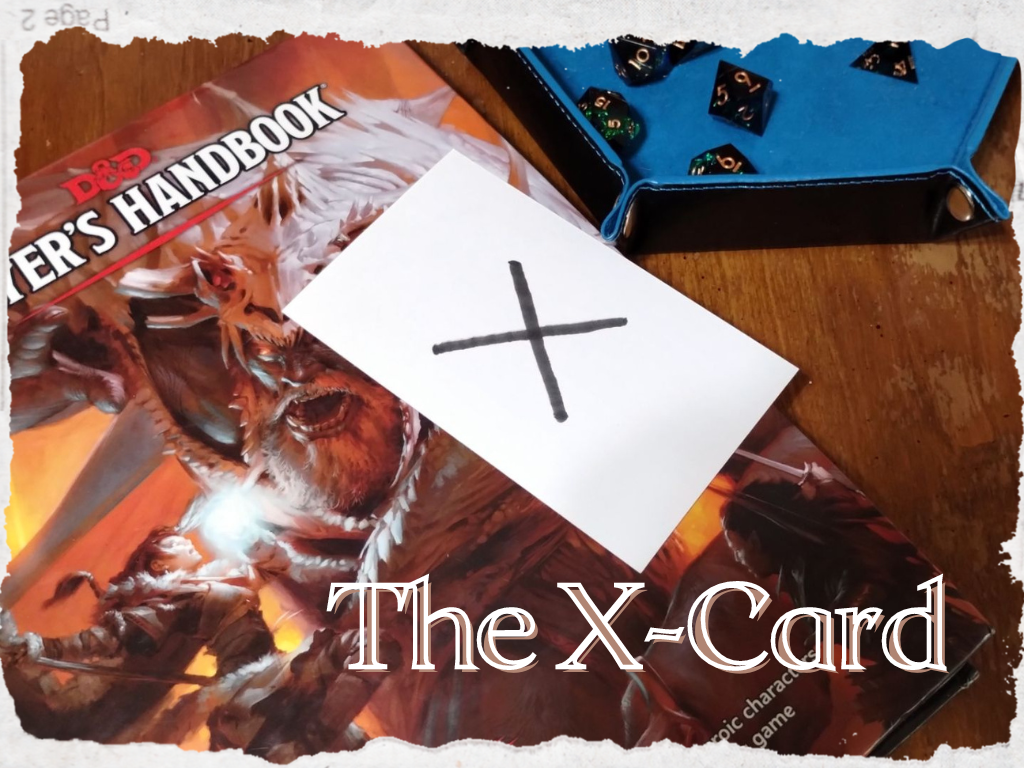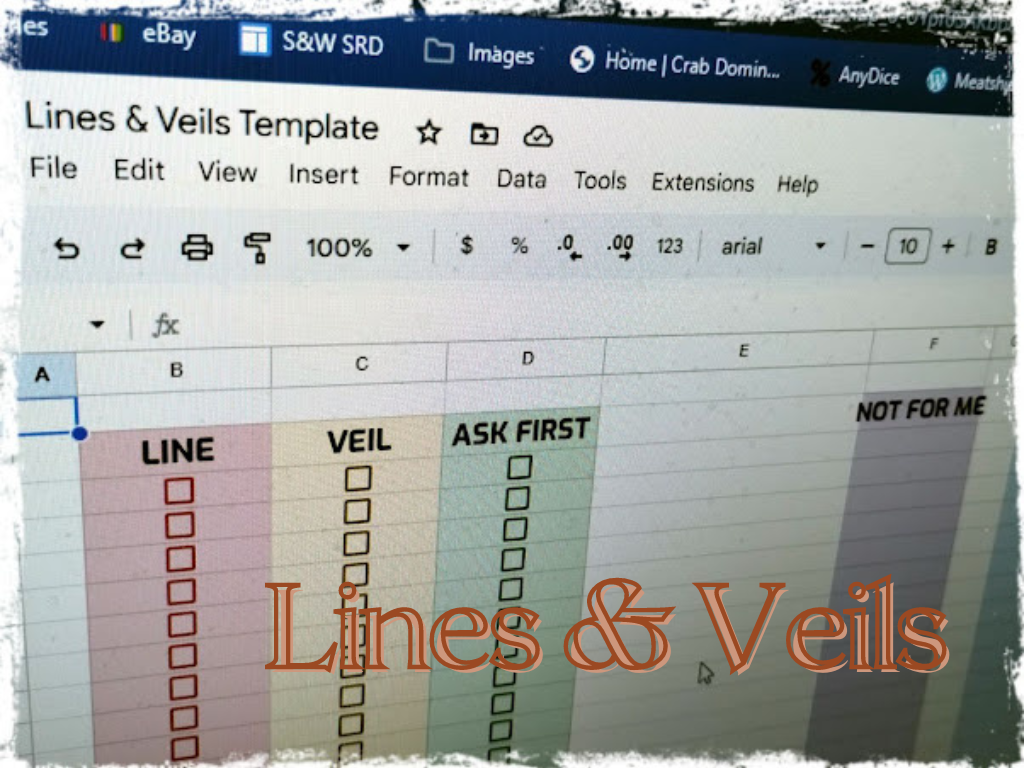Exploring TTRPG Safety Tools: X Card, Session Zero, and More
I have a confession to make: I used to consider myself firmly against safety tools. A gaming table that trusted each other, I reasoned, should trust each other to make good decisions at the table. Trust, for me, was the key. I wanted my players to trust that, behind the screen, I was going to make good decisions that treated them reasonably as adults. The problem was, though, the only reason they had to trust me was that, in many cases, the players knew me from one thing or another. What about folks new to my table? Well, they should trust me because other people do. What if they’re new to tabletop roleplaying games or tabletop gaming entirely? What if they don’t know the other people who already trust me? This is where my “trust is enough” philosophy broke down completely. You shouldn’t trust anyone without a good reason. Safety tools aren’t just about keeping your gaming table a safe, welcoming place, they’re also about building that trust at your table so you can have amazing adventures together!
Understanding TTRPG Safety Tools
I want you to think about safety tools as one more tool in your Dungeon Mastering (or Game Mastering or heck, TTRPG playing in general) kit, just like character sheets, dice or any of the other thousand accouterments that have sprung up with our hobby. While safety tools’ obvious focus is on the safety of players at the table, they also help the DM make sure that their games are big successes without falling into any of the pit traps of triggers, traumas and treachery. Some tools help us navigate between these ever-present problems at the table. Some work like traffic lights, telling us to go on with what we’re doing, to proceed with caution and even to stop before things get dangerous. But safety tools aren’t just pointless rules; they create a structure in which we can have fun together without worrying about tripping over each other’s boundaries. Mastering these tools is your key to becoming the trusted Dungeon Master that you know you want to be by putting your players and their characters first, making sure no hero gets left behind in the shadows.

The X Card: Your Safety Net
The X-Card was the first TTRPG safety tool I ever heard about and it is, to this day, one of the best. Think of the X-Card as a sort of D&D emergency brake, making sure that we can stop swiftly enough before we crash face-first into a problem. The actual shape of the X-Card can vary widely, from a literal, physical card for in-person experiences (in these cases, just take out an index card and put a BIG “X” right on it), an icon in some VTTs (Roll20 has a “Safety tools” card deck that includes the X-Card, so it’s right there) or even a nifty little chatbot in Discord (though the big one of these is down for the moment). The idea is that, whenever something in-game is too much in one way or the other, you tap that X-Card and your table taps the “pause” button on the story. By tapping the X-Card, you’re letting the rest of your table know that the current in-game situation is not cool by you; the group then has the chance to change its course before we hit that aforementioned wall. Do we skip this scene? How do we change course from here to keep from hitting that wall? Can we reframe the scene as it exists or do we need to change some fundamental details to keep everyone safe and comfortable with what’s happening? Also, the X-Card is probably the easiest safety tool to use, you simply make a single card available to your players and make sure they know where it is and how to use it. For Game Masters like me, it’s like buckling your seatbelt: you wouldn’t drive without your seatbelt on, and I won’t run a D&D session (or any other TTRPG session for that matter) without making sure that everyone knows where the X-Card is and what it’s for.
Session Zero: Setting Expectations
It’s hard for me to imagine starting any TTRPG campaign off without a proper Session Zero. Way I see it, the group needs to sit down together and talk about what the campaign is going to be like, who their characters are going to be and who the players themselves are before anyone rolls for initiative. While you’re talking about all the cool stuff you and your players are going to bring to the game, take a few minutes out to discuss safety tools and how to use them. Every Session Zero – even with people I’ve been gaming with for years – features a short bit about safety tools that starts like this: “Hey folks, I want to take 5-10 minutes to talk about safety tools at our table during this campaign.” Boom, conversation started. I work it in right before we talk about who our characters are so players know what they’re playing with before they start playing with it. For some tools like Lines & Veils (my absolute favorite tool, read about it below), Session Zero is just a natural fit: by having these conversations as early, early, early in the process of getting a new campaign off the ground, all your players will know that you’re taking their safety at your table seriously and you’ll start building that all-important trust from the jump and you really can’t ask for a better start than that.

Lines & Veils: Customizing Content
To me, Lines & Veils are an even better-designed version of the MPAA’s rating system for films. What even is the difference between PG and PG-13, anyway? Each player at your table – even you – is going to have different experiences and thus, different boundaries and Lines & Veils is a great way to talk about those boundaries rationally and reasonably before they become an issue rather than struggling to hit “pause” on a situation that needs to be repaired. During your Session Zero, ask your players for what Lines aren’t to be crossed and which things belong behind Veils. Think of Lines as “lines in the sand;” the things you put on the other side of the line just won’t be in the game at all. Just never put them in in the first place and you’ll never have to take them out. I always start the process of discussing Lines & Veils by giving my own very firm Line: violence against children. Maybe it’s because I’m a parent, but that’s something that just sets me off and I’m not interested in playing or running a game that includes it. By letting my tables know that (a) my Line is here, I’m also letting my players know (b) it’s totally cool to draw Lines here at my table. Is that the sound of trust being built at the table? Why yes, yes it is. Veils are similar to Lines; these are things that you don’t feel comfortable with and don’t want getting any “on camera” time in the campaign. The things described in a Veil can happen behind the scenes, but the PCs won’t directly encounter them and the players won’t have to suffer through descriptions of these things being done. Think about how Hitchcock used to show a good ol’ fashioned murder in a movie like Psycho: you know the killings happen, but you never really see the violence; that’s a veil done right. Have this conversation early in your Session Zero to make sure you’re all on the same page and then you can switch to the part where you talk about the things you want to see in the campaign that much faster!
Content Warnings: Preparing Your Players
Sometimes, though, we don’t have time to do a full-blown Lines & Veils confab. Maybe it’s a one-shot. Maybe you’ve got a “guest star” player who’s just in town for the one session. Maybe you’re running a game at a convention. All of those situations are perfect for Content Warnings. In effect, Content Warnings are brief lists of possible triggers or offensive material that could be found in that particular session. For example, if I were going to run my old buddy Donn Stroud’s adventure for Old School Essentials, “Isle of the Plangent Mage,” I’d for sure include a Content Warning that the adventure prominently features sharks, squids and other fairly creepy/scary denizens of the deep. For me, this process is descriptive, not proscriptive; as I read content that I want to use, I make a point of identifying the important central themes (like “there’s a bunch of mutant sharks and other stuff” in Plangent Mage) and then I deliver a Content Warning that describes them in the broadest way possible to allow my players the chance to say “nope” (or, far more likely, “yep”) without ruining the content or stumbling across a surprise trigger. But Content Warnings aren’t just for short games, they can be right at place in long-standing campaigns, too. When I want to introduce something that I’m not sure how my players will respond, I’ll flat out tell them “Hey folks, there’s this thing I want to do, but I want to make sure it’s cool with you first.” Then I’ll hit them with Content Warning bullet points, kind of like the ratings systems on streaming services like Netflix have started to call out the specific things that folks might find objectionable in a given piece of media. If folks aren’t into it, they’re not into it and we can go another direction, but they made an informed choice rather than just stumbling into trouble.
Best Practices for Implementing Safety Tools
First, be clear. Be clear about what tools you’re using and how they work. Be clear about Lines & Veils and what each means. Be clear about what kind of major themes might warrant a Content Warning. Most of all, be clear with your table about what you all expect from the game, from your tabletop group and from each other as players. There’s this sadly harmful old school tradition of the players and Dungeon Master trying to get something over on the other side. DMs hoard secrets behind screens, deliberately withholding information that could save the PCs’ lives. Players start answering direct questions cagily, dancing around their intent by asking broad, leading questions. Neither of these strategies are honest nor trustworthy. Instead, be open with your players and set that expectation with them. Further, don’t expect that things are always going to stay the same. Your player’s lives move on and sometimes, that means the Lines we draw and the Veils we put in place change for them. Work into your game plan for your campaign discrete times to check in with your players about the content. “Hey folks, when this arc is over, I want to get some feedback from you” is all you have to say to start that conversation. Sure, they may have other things to talk about during that session (and that’s important, too), but it’s up to you to schedule some time to go back over our safety tools to make sure everyone is comfortable using them and that they’re calibrated correctly for where your gaming group currently is psychologically.
Conclusion
Every point I made in this article boils down to two things: (a) these are tools you can use to make your table a safer place for you and your players and (b) that the use of these tools to make your table safer encourages your players to trust you and each other more. I honestly can’t think of a good counterargument against both of those two points together. We Game Masters ask our players to put their faith and trust in us every session: for a great story, for a chance for their character to shine, for interesting challenges and obstacles. Using Safety Tools at your TTRPG gaming table is the perfect way to earn that trust by demonstrating that you’re taking your players’ safety seriously. You’re demonstrating that you’re trustworthy and that your table is an inclusive, safe place for players to have an adventure, take chances and have the best game they can.
For more information about Safety Tools in tabletop roleplaying games, check out the TTRPG Safety Toolkit, which is updated regularly with new techniques and tools as they are developed!

Adam picked up D&D in the summer of 1985 when he bought a copy of the Mentzer Red Box at a garage sale and never looked back! A veteran of the OSR, NSR and story games scenes, Adam runs almost as many games as our Camp Dragon Online professional DMs! When he’s not tempting unwary adventurers to their inevitable doom, Adam leads Camp Dragon Online’s Digital Marketing team.
Recent posts